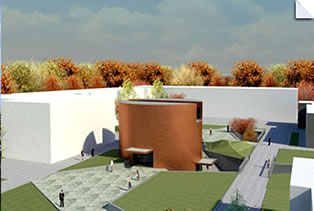Study of the addition of calcined clays in the durability of concrete
DOI:
https://doi.org/10.4067/S0718-50732011000100002Keywords:
Calcined clays, durability, capillary absorption, porosity, hydration productsAbstract
Currently economical and environmental advantages of cement clinker replacement by other supplementary cementious materials are well known. For example calcined clays, such as metakaolin, have drawn special attention during recent years. It is well known that these admixtures added to mortars and concretes improve mechanical strength as well as durability. The purpose of this study is to evaluate the behavior of physical-mechanical properties and durability in micro-concretes, by employing calcinated and grinded clays as replacement material, by 30% of ordinary Portland cement (OPC). Therefore, clay soil was employed, which is mainly composed by low-purity-kaolin mineral, so as to obtain calcined clays to be used as supplementary cementious minerals. Best results for compressive strength at 28 days were obtained by sedimentary calcined clays, which have higher content of kaolin mineral thanks to a purification process by means of raw material sedimentation conducted on this admixture only. Nevertheless, capillary water absorption tests delivered best results for calcined clay soil, which finesse is quite high. Lower values showed by this admixture, as much for capillary porosity and sorptivity, revealed there was a predominance of compaction and impermeability phenomena achieved by cementious matrix using such fine material, over the effect of puzzolanic reaction. Micro-structure studies on C-S-H gel, employing energy dispersive x-ray (EDX) technique, demonstrated that the use of calcined clays as replacement of RPC favors the creation of quite stable hydration products, mainly monosulfos of hemicabo and monocarbo types, which is convenient for concrete against possible deterioration actions from different mechanisms.

